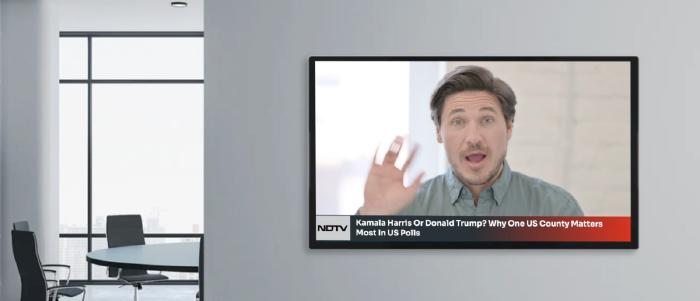
Sep 3 2024
8 min read

Imagine walking into a bustling shopping mall, where every screen—from the entrance to the food court—is playing the same captivating promotional video, announcing an irresistible flash sale, with all screens synced together. It’s the power of content synchronization in action.
You must be aware that it’s a cognitive bias, which suggests that frequent exposure makes us more comfortable and inclined towards a stimulus. As a business, wouldn’t you want to create the same impact for your customers? However, the common pain point is that multiple screens will not be content synced when played simultaneously. How can you address this issue?
The good news is that there is an easier way to implement this. But before we dive into the ‘how,’ let’s first understand what content synchronization actually is and why a specialized feature is needed to achieve this. Let’s get into the details.
Content synchronization, in simple terms, means that all the screens within a particular area play the same content in sync in real-time or at scheduled intervals.
The specific content sync feature is extremely crucial for video walls, business dashboards, and FIDS screens where you need to display the same across multiple screens in sync without any delay.
Imagine a retail store that wants to start a seasonal campaign. This includes a promotional video showcasing their fresh collection, which will be played across all digital signage screens in their store simultaneously. As customers walk into the stores, they are greeted by the same video, regardless of the location.
In such a scenario, the brand can use content synchronization features across all their digital signage screens. This ensures that the promotional video is played across all screens simultaneously without any delay. This synchronization of content ensures reinforcement of consistent messaging across all stores, thus helping the brand deliver a unified customer experience.
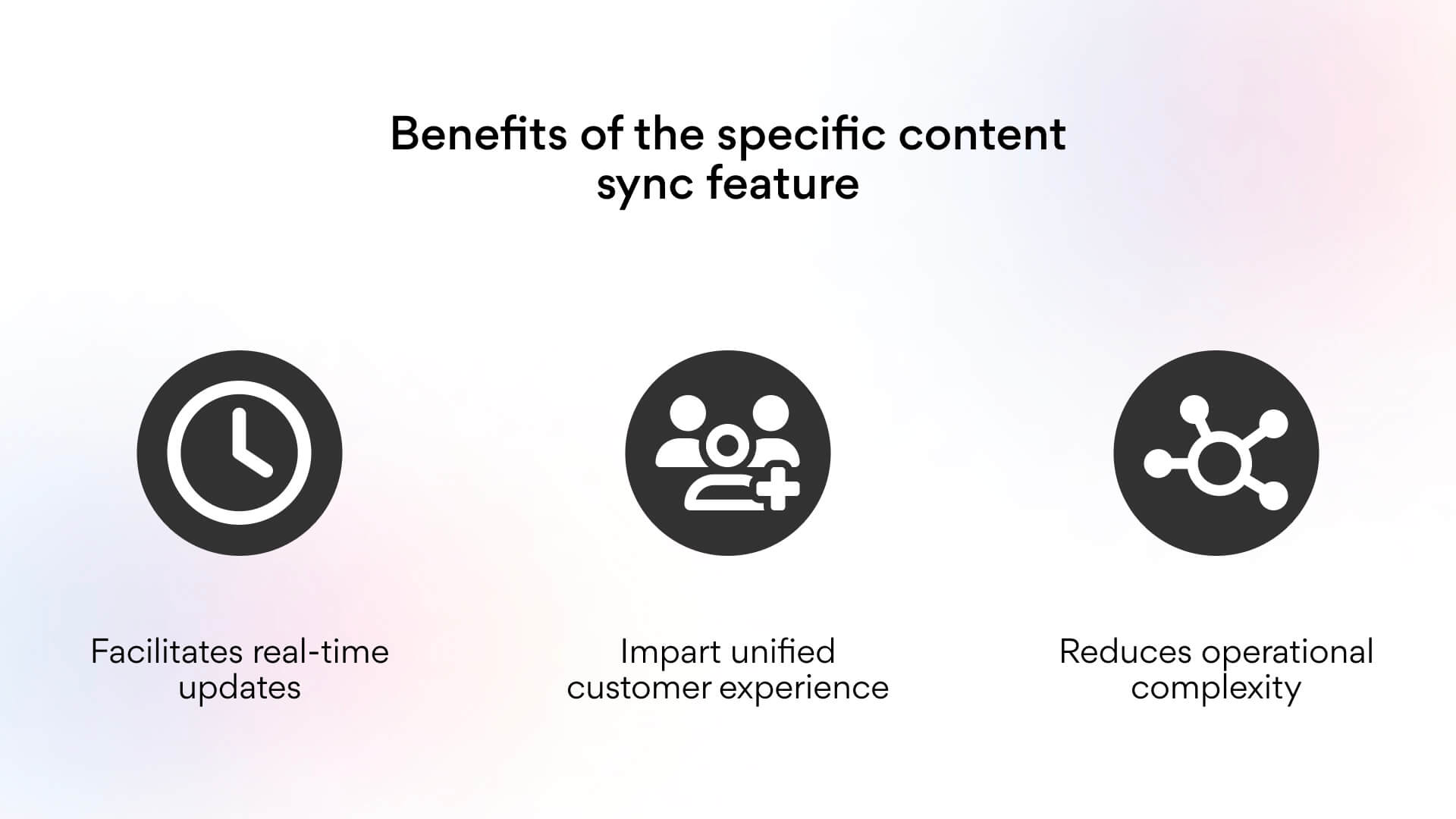
Let’s say you have multiple screens installed in a particular location, each of which has its own media player. If you want to play the same content across all screens, you will notice that the screens end up out of sync.
Why does this happen? It’s because each of the screens and players works independently according to its own internal clock. Since the speed of the internal clock slightly varies from device to device, you can’t sync the content across them in this way.
This is where the specific content synchronization feature comes in as a rescue, which allows you to sync all the players along with their internal clocks.
Now, what are some other reasons why you need this feature? Or, let’s say how this feature can be helpful for your business? Let’s understand it together.
In a trading floor where real-time price updates must be displayed across all screens in real-time, the content sync feature is a boon. This specific feature helps you deliver real-time updates quickly across all screens without any delay or discrepancy in such fast-paced environments.
Want to launch a flash sale in your retail store? Have an urgent information to convey in your corporate workspace? The specific content sync features will help you in such scenarios.
Playing the same content across multiple screens manually is tough and tiresome. If you start synchronizing and scheduling the content in all the screens individually, it’s going to leave you tired and irritated. The content will also not be synchronised.
With digital signage content automation, your content management system (CMS) takes care of this for you. One update triggers synced playback across all screens automatically. You save time, reduce human error, and eliminate operational hassle.
The more consistent your brand messaging is, the stronger your presence is in the minds of the audience. It’s much easier to keep the audience engaged and captivated with synchronized content plays as this creates a unified visual experience.
For example; let’s say a shopping mall owner wants to start a flash sale for limited time. He can sync the content across his normal digital signage screens and start the sale at a time ensuring that all sales display the flash sale information simultaneously during that time period. Post the sale, the screens can resume showing the regular content displayed on them.
Now, what are some use cases of the specific content sync features? Let’s discuss.
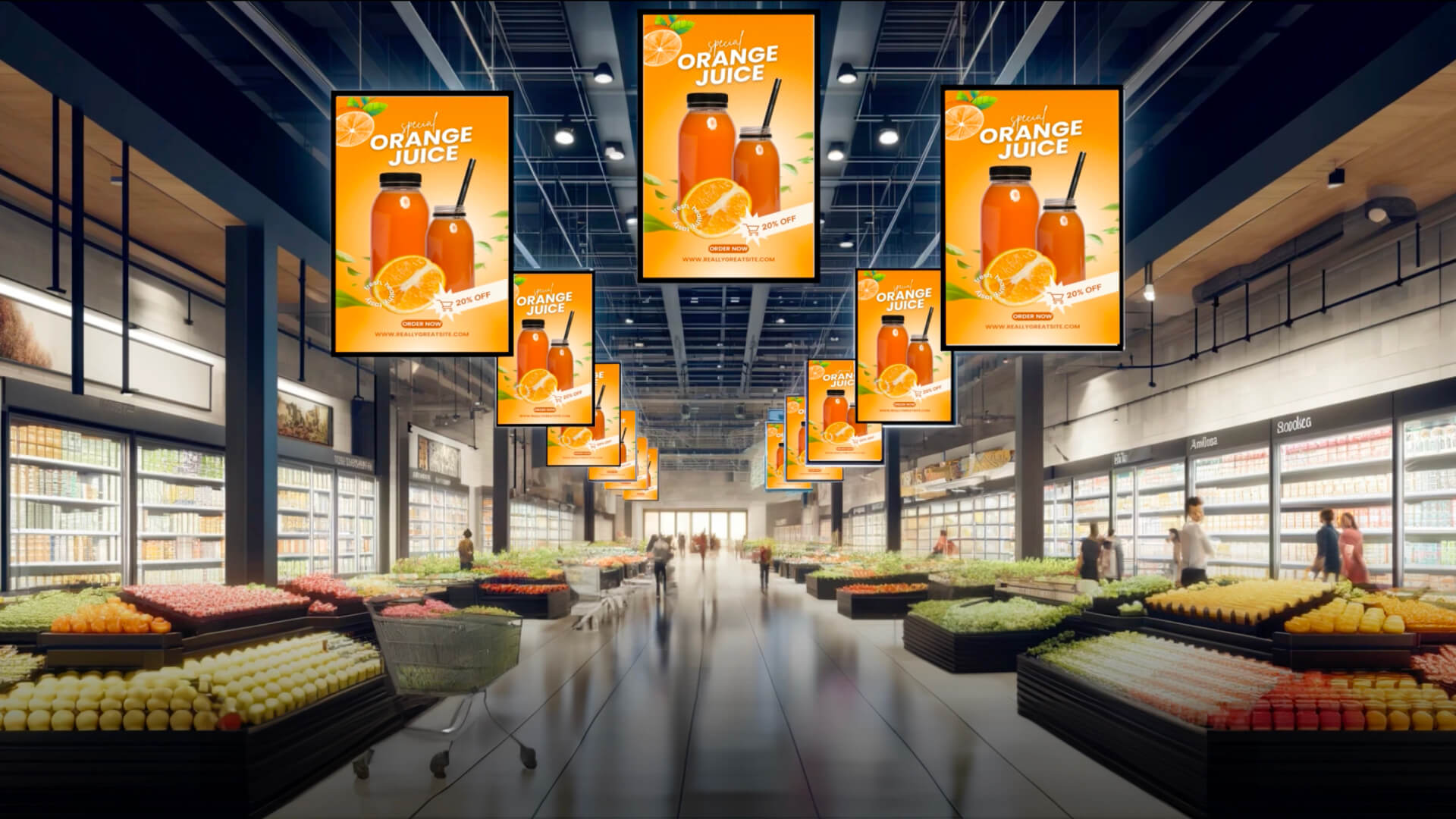
Similarly, shopping malls can synchronize their screens to promote mall-wide events like “Black Friday” sales or “Holiday Discounts,” creating a cohesive and engaging shopping experience for customers across all areas.
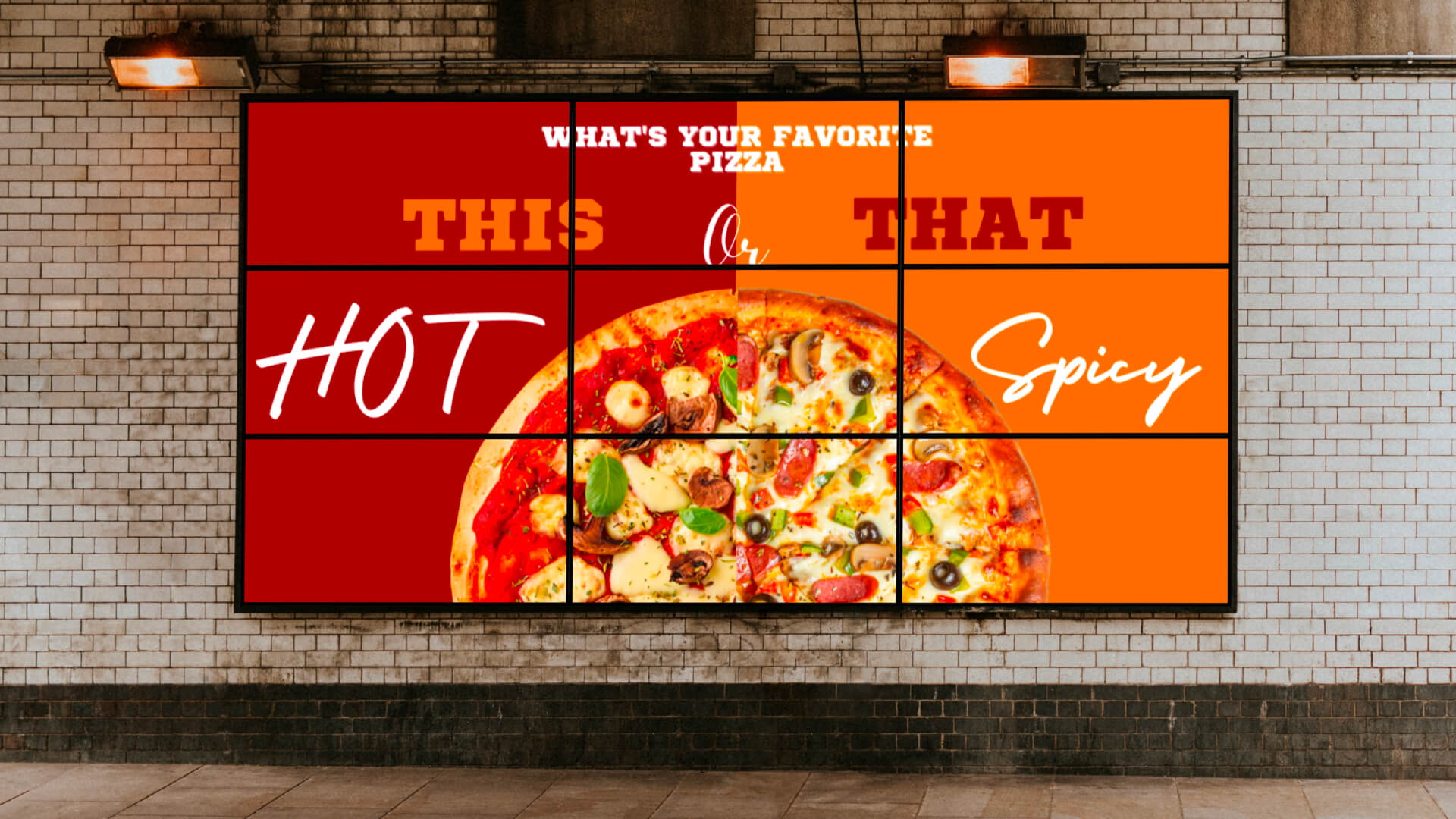
Content synchronization in video walls helps you ensure that all your screens display the same content seamlessly and simultaneously. This synchronization eliminates delays and inconsistencies, creating a unified, impactful visual experience.
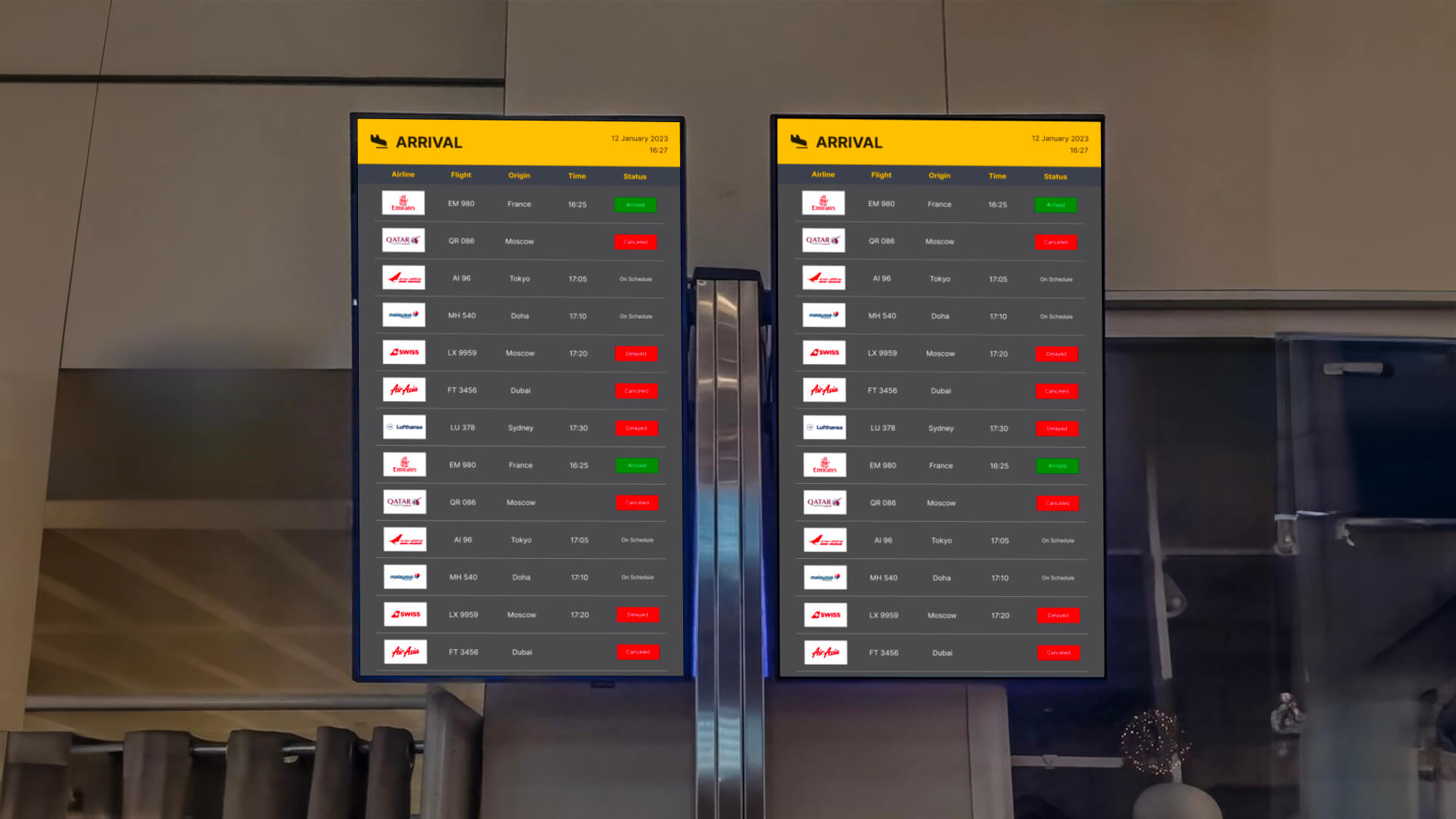
Content synchronization in Flight Information Display Systems (FIDS) is essential to provide accurate, real-time updates on flight schedules, gates, delays, and cancelations across all screens at an airport.
This ensures all passengers receive consistent, up-to-date information simultaneously, reducing confusion, minimizing missed flights, and enhancing overall travel experience. It also plays a crucial role in emergency communication, instantly displaying critical alerts and safety instructions throughout the airport.
During a live match in the stadium, it is crucial to display real-time updates consistently across all screens.
For example, during a football game, the main scoreboard, various screens throughout the stadium, and those in areas like the food court should all show the current score simultaneously. Beyond game updates, synchronized displays can also be valuable for sharing emergency alerts, promoting merchandise, providing safety instructions, and more.
Content synchronization can be useful in financial institutions like banks, stock exchanges, and trading floors. In stock exchange and trading floors, live updates of market updates, stock prices, indices, and exchange rates across traders and investors are very important. Multi-screen can be used to display this information live, synching the content throughout the screens.
Additionally, since financial markets are sensitive to news, any critical news updates can be broadcast simultaneously across all screens, minimizing reaction time. In banks, synchronized screens can be used to display educational content, promote new savings schemes, and highlight government financial initiatives, ensuring consistent messaging to customers across all branches.
Now what does Pickcel have in store for you? If you are looking for the perfect video wall solution or a simple solution to sync your screens, Wallcraft by Pickcel is for you. Wallcraft is Pickcel’s video wall solution which helps you create impactful video walls in a budget-friendly way without any expensive hardware.
Content synchronization is much easier with Wallcraft. Moreover, you have the flexibility and power to take charge of your content, manage, customize and schedule it according to your needs. Want to create stunning video walls that deliver your message in an eye-catching and bold way? Want a solution to sync content on all your screens and manage them effortlessly? Try Wallcraft today!
Content synchronization has transformative potential: it brings clarity, consistency, and immediacy to communication across any environment. By broadcasting the same message across multiple screens simultaneously, synchronized content not only ensures uniformity but also creates a cohesive and engaging experience for your audience.
If this resonates with you, visit Pickcel today to learn how Wallcraft can help you synchronize your message and captivate your audience.
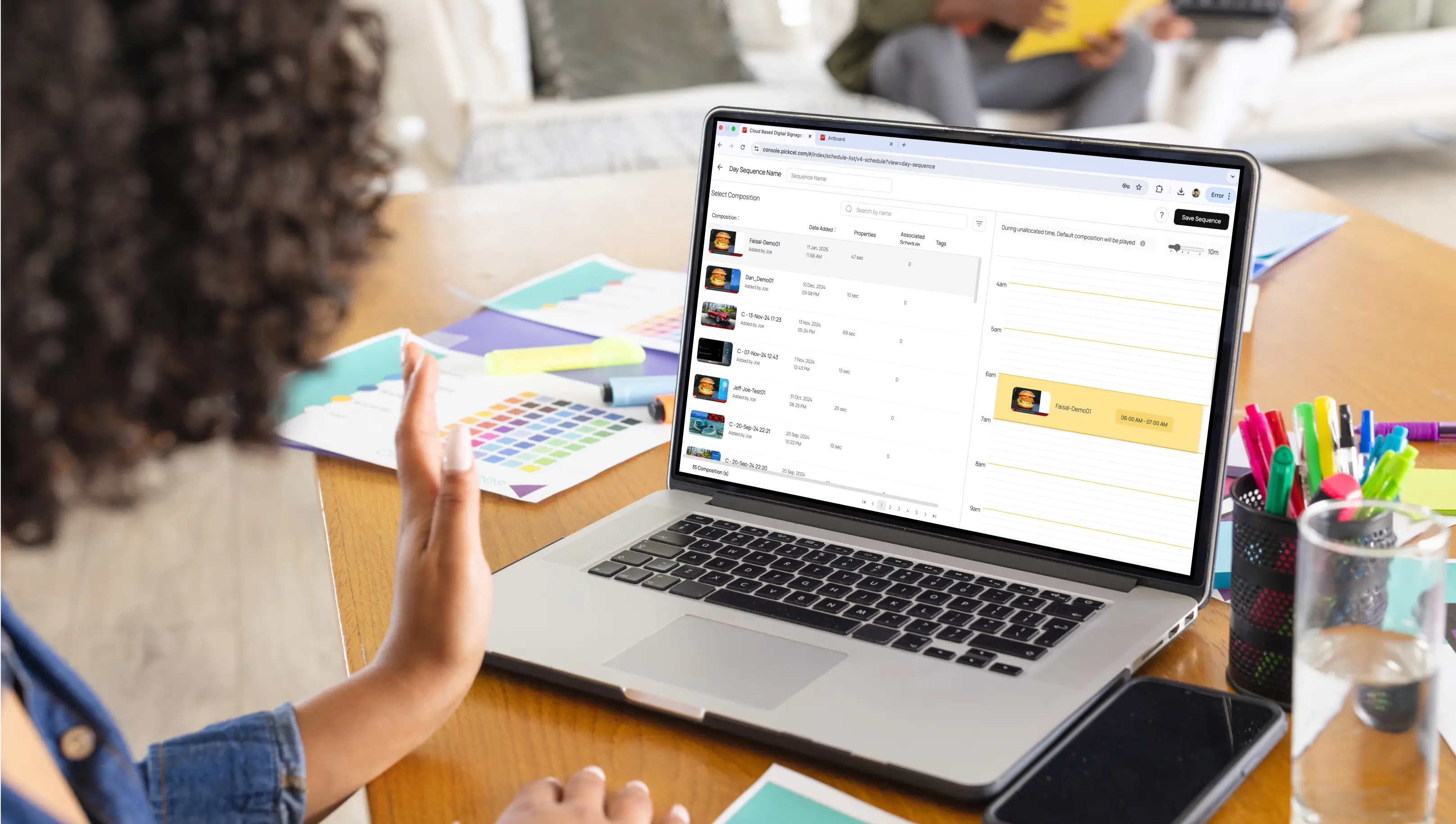




Sep 3 2024
8 min read
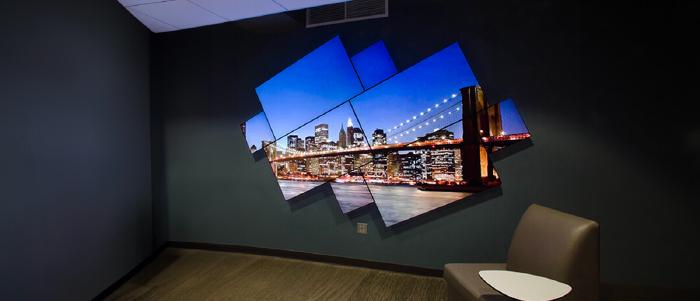
Aug 26 2024
7 min read
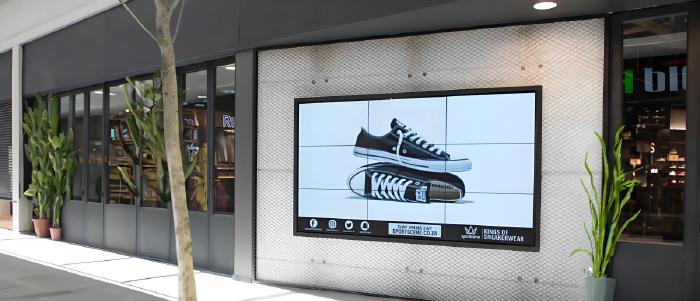
Feb 21 2024
6 min read
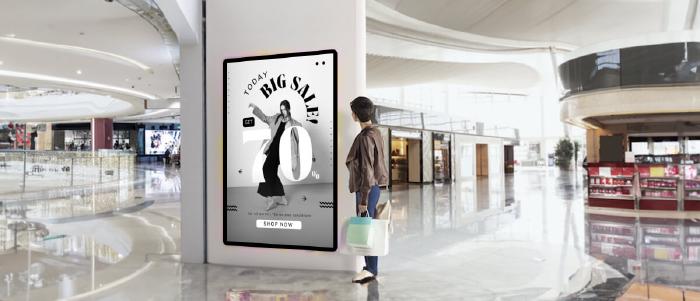
Jan 24 2024
7 min read
Take complete control of what you show on your digital signage & how you show it.
Start Free Trial Schedule My Demo